I am implementing a symmetric bidirectional A* shortest path algorithm, as mentioned in [Goldberg and Harrelson,2005]. This is only for understanding the algorithm, therefore I used the most basic version without any optimization steps.
My problem is the bidirectional algorithm appears to scan almost two times the number of edges scanned in a uni-directional A* search on the test graph.
Example: a s-t query on a road network using A* (left) and bidirectional A* (right). Nodes scanned by the forward and backward search are colored in red and green, respectively. The heuristic function is simply the euclidean distance to t or s. The computed paths (blue) are correct in both figures.
I may be understanding the algorithm logic incorrectly. Here is how I adapted unidirectional A* to bidirectional (from reference)
- Alternate between forward search and backward search. Maintain variable
muas the current best estimate of s-t path length. - In the forward search, if
win edge(v,w)has been scanned by the backward search, do not update w's labels. - Each time a forward search scan
(v,w)and ifwhas been scanned by the reverse search, updatemuifdist(s,v) + len(v,w)+dist(w,t)<= mu - Stopping condition: when forward search is about to scan a vertex
vwithdist(s,v) + potential_backward(v) >= mu - (Similar rules apply in the backward search)
I'd appreciate if anyone can point out the flaws in my implementation, or some more detailed explanation of the bidirectional A* algorithm.
Code in Python:
"""
bidirectional_a_star: bidirectional A* search
g: input graph (networkx object)
s, t: source and destination nodes
pi_forward, pi_backward: forward and backward potential function values
wt_attr: attribute name to be used as edge weight
"""
def bidirectional_a_star(g,s,t,pi_forward, pi_backward, wt_attr='weight' ):
# initialization
gRev = g.reverse() # reverse graph
ds = { v:float('inf') for v in g } # best distances from s or t
dt = ds.copy()
ds[s]=0
dt[t]=0
parents = {} # predecessors in forward/backward search
parentt = {}
pqueues =[(ds[s]+pi_forward[s],s)] # priority queues for forward/backward search
pqueuet = [(dt[t]+pi_backward[t],t)]
mu = float('inf') # best s-t distance
scanned_forward=set() # set of scanned vertices in forward/backward search
scanned_backward=set()
while (len(pqueues)>0 and len(pqueuet)>0):
# forward search
(priority_s,vs) = heappop(pqueues) # vs: first node in forward queue
if (priority_s >= mu): # stop condition
break
for w in g.neighbors(vs): # scan outgoing edges from vs
newDist = ds[vs] + g.edge[vs][w][wt_attr]
if (ds[w] > newDist and w not in scanned_backward):
ds[w] = newDist # update w's label
parents[w] = vs
heappush(pqueues, (ds[w]+pi_forward[w] , w) )
if ( (w in scanned_backward) and (newDist + dt[w]<mu)):
mu = newDist+dt[w]
scanned_forward.add(vs) # mark vs as "scanned"
# backward search
(priority_t,vt) = heappop(pqueuet) # vt: first node in backward queue
if (priority_t>= mu ):
break
for w in gRev.neighbors(vt):
newDist = dt[vt] + gRev.edge[vt][w][wt_attr]
if (dt[w] >= newDist and w not in scanned_forward):
if (dt[w] ==newDist and parentt[vt] < w):
continue
else:
dt[w] = newDist
parentt[w] = vt
heappush(pqueuet,(dt[w]+pi_backward[w],w))
if ( w in scanned_forward and newDist + ds[w]<= mu):
mu = newDist+dt[w]
scanned_backward.add(vt)
# compute s-t distance and shortest path
scanned = scanned_s.intersection(scanned_t)
minPathLen = min( [ ds[v]+dt[v] for v in scanned ] ) # find s-t distance
minPath = reconstructPath(ds,dt,parents,parentt,scanned) # join s-v and v-t path
return (minPathLen, minPath)
Update
Following Janne's comment, I created a demo that tests the search on a few examples. The implementation has been improved, and fewer nodes are scanned.
Example: Shortest path from the red dot to the green dot on a (directed) grid graph. The middle figure highlights nodes scanned by A*; The right figure shows nodes scanned by the forward search (orange) and those scanned by the backward search (blue)

However, on the road network, the union of nodes scanned by the forward search and those scanned by the backward search is still more than the number of nodes scanned by a unidirectional search. Perhaps this depends on the input graph?
